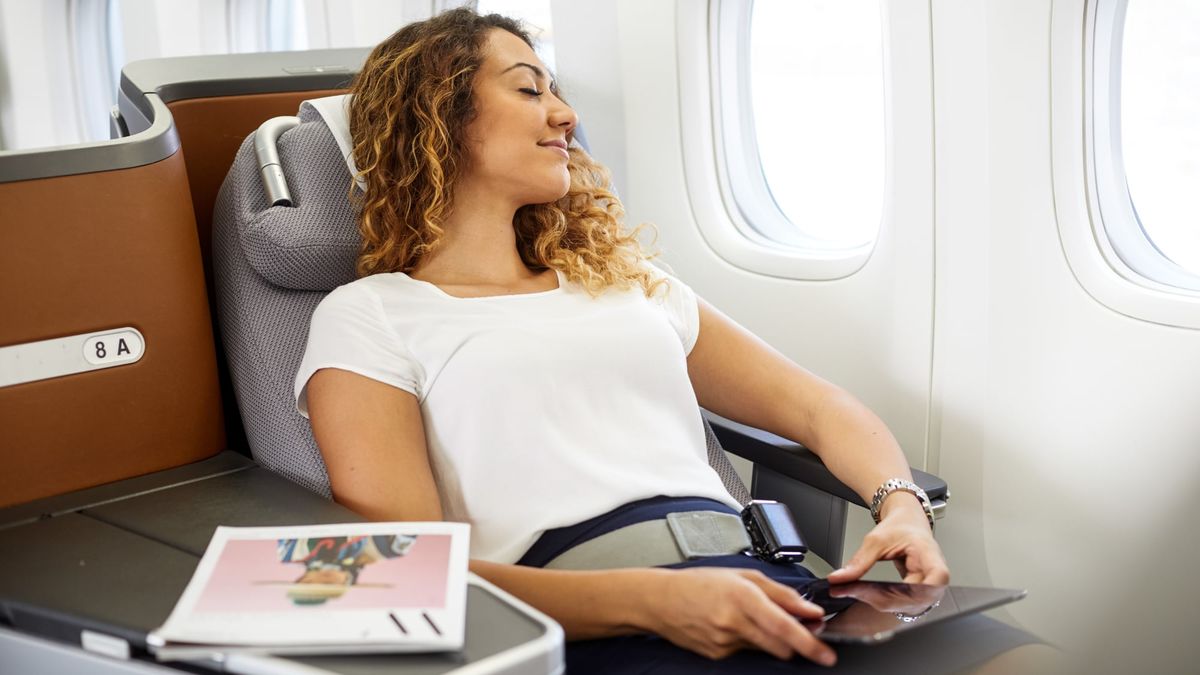How to get an airline status match
Expert tips on taking the fast track to frequent flyer status across several airlines.

You've done the hard miles – quite literally, having flown tens of thousands or even hundreds of thousands of them – to earned Gold, Platinum or some other shiny badge of status with the frequent flyer scheme of your favourite airline. Well done.
But under the right circumstances, you can use that status to gain a similar elite ranking with another airline, especially a competing one.
And if the airline is a member of the 'big three' alliance groups – Oneworld, SkyTeam and Star Alliance – then its status will deliver handy perks across a dozen or more additional airlines.
The key to unlocking all this is a status match, and here's what you need to know about getting in on the action.
What is a status match?
A status match sees one airline offer you complimentary frequent flyer status in its own rewards program based on the status you hold with a competing airline.
Sometimes this will be at an equivalent or comparable tier, although it won't always go by the same name because not all airlines use the same 'branding' for their loyalty programs.
While many airlines set Gold and Platinums as their two top tiers, others use Silver and Gold, or Gold and Diamond. Still others might add Elite or Plus as a status suffix. All that counts is that you get the same set of benefits as in your original status, the one which you're matching against.
Other times, instead of matching on a like-for-like basis, an airline will take a more cautious approach and match you one or even two rungs down in their own frequent flyer scheme, provided that lower level still delivers the basics of lounge access, priority check-in and so on.
What is a status challenge?
However, beyond an outright status match is what's called a status challenge or a status fast-track.
This is more rigorous than an outright status match.
Under the status challenge or fast-track model, you'll be granted status equivalent to (or at a level below) your tier with a competing airline for a limited amount of time. This works like a short-term status match and typically runs for 90 days.
To keep that gratis status for a full year, you'll need to earn a certain number of status credits (sometimes also known as tier miles or qualifying miles, depending on the airline) by flying with that airline within that qualifying period.
This is usually a greatly reduced number of status credits to pocket that Silver, Gold or Platinum card compared to what's needed without the status challenge, which is why this works as a 'fast track' to status.
Status match vs status challenge
It's become increasingly rare for airlines to offer a straight status match without any requirement for flying with them.
That's a measure now mainly seen when a new airline debuts, when an airline plans a dramatic expansion, and when it's up against an established incumbent.
Status challenges are becoming more popular with airlines because they require that you earn ;your status by flying with them.
Why airlines offer a status match or challenge
Airlines will launch a status match or status challenge to entice high-value travellers across from their competition by providing them with a shortcut to status in its own loyalty program.
Let's say that you hold Qantas Gold status. This entitles you to prized perks such as lounge access, checking in for your flight at the business class counter, and having priority boarding and priority luggage handling, even when you travel in economy class.
That Gold status helps keep you loyal to Qantas because you value those benefits and don't want to lose them, so you'll do at least as many flights with Qantas as necessary to keep your Gold status by earning a minimum 600 Qantas status credits in your membership year.
So if a competitor to Qantas wants a shot at winning your business – and as a Gold-grade flyer, you'd be a good customer to land – it's in their best interest to let you sample their flights without having to forego those perks to which you've become accustomed.
That's when a status match or status challenge kicks into gear: by dint of having Qantas Gold status, in this example, the competing airline will tempt you across with the equivalent status in its own frequent flyer plan.
Who is eligible for a status match?
A status match is typically reserved for a top-tier frequent flyer – someone at levels approximating Gold or Platinum, in the parlance of many frequent flyer schemes – because their status is proof that they do a lot of travel, and quite likely in the premium cabins of business class or even first class.
This makes then far more valuable to airlines than travellers who sit lower down the food chain with the likes of Silver, Blue or Green status.
In some instances you'll need to provide a copy of a recent activity statement with your current frequent flyer scheme to show that you are in fact a frequent flyer, rather than a low-value or no-value traveller who simply takes advantage of every status match that comes along.
Which airlines will offer you a status match?
Some airlines will widely promote a status match or status challenge, complete with online forms where you enter all your details plus a clear set of eligibility criteria and how you go about retaining that status.
Other airlines prefer to keep their status match options under wraps and run them as invitation-only affair, extended to a high-value frequent flyer at the airline's discretion and on a case-by-case basis.
Executive Traveller regularly reports on status match promotions: but apart from those, if you're seeking a status match from a particular airline, the simplest way is to approach that airline's frequent flyer program and ask.
How to request a status match
First up, you'll want to make a persuasive case that as a frequent flyer you'd be a good catch.
This may be based not only on how often you travel and what your future travel plans are (if you can point to an emerging pattern of travel on that airline) but also if you make travel decisions for your company or clients.
If possible, telephone the airline's frequent flyer call centre, let them know your current status with a competing airline and state that you're interested in applying for a status match or status challenge (it can also help at this stage if you've got several trips coming up which might be booked through the airline you're calling).
Try to get a specific email address to which send your status match or status challenge request (this makes follow-up easier than sending it to a generic email address).
If you get a "sorry, we don't do status matches" answer, try calling back a while later to catch a different operator – you may also get a different and more positive answer. (This is the "call centre bingo" approach, and it works for more than just status matching.)
It also helps to show that you're status-savvy by knowing that airline's equivalent tier to your current rating.
In your email request, consider making the following points to underscore your prospective 'value':
- how frequently do you travel – and how many high-tier loyalty cards do you have?
- have you heard good things about the airline from colleagues?
- has your company just won a contract taking you to this airline's hub airport and beyond?
- what are your travel plans for the next quarter, half-year or year (and can you point them to an emerging pattern of travel on their own flights?)
- do you make the travel decisions – and especially airline decisions – for your company or clients?
As a rule, you'll need to provide a scan of your card and a copy of your most recent account statement. Reiterate your usefulness and value to them as a customer when you send this in – it certainly can't hurt.
